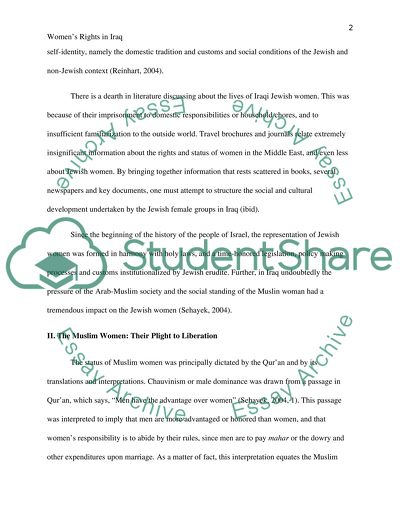Cite this document
(Women's Rights in Iraq Essay Example | Topics and Well Written Essays - 2000 words, n.d.)
Women's Rights in Iraq Essay Example | Topics and Well Written Essays - 2000 words. https://studentshare.org/sociology/1550233-womens-rights-in-iraq
Women's Rights in Iraq Essay Example | Topics and Well Written Essays - 2000 words. https://studentshare.org/sociology/1550233-womens-rights-in-iraq
(Women'S Rights in Iraq Essay Example | Topics and Well Written Essays - 2000 Words)
Women'S Rights in Iraq Essay Example | Topics and Well Written Essays - 2000 Words. https://studentshare.org/sociology/1550233-womens-rights-in-iraq.
Women'S Rights in Iraq Essay Example | Topics and Well Written Essays - 2000 Words. https://studentshare.org/sociology/1550233-womens-rights-in-iraq.
“Women'S Rights in Iraq Essay Example | Topics and Well Written Essays - 2000 Words”. https://studentshare.org/sociology/1550233-womens-rights-in-iraq.


